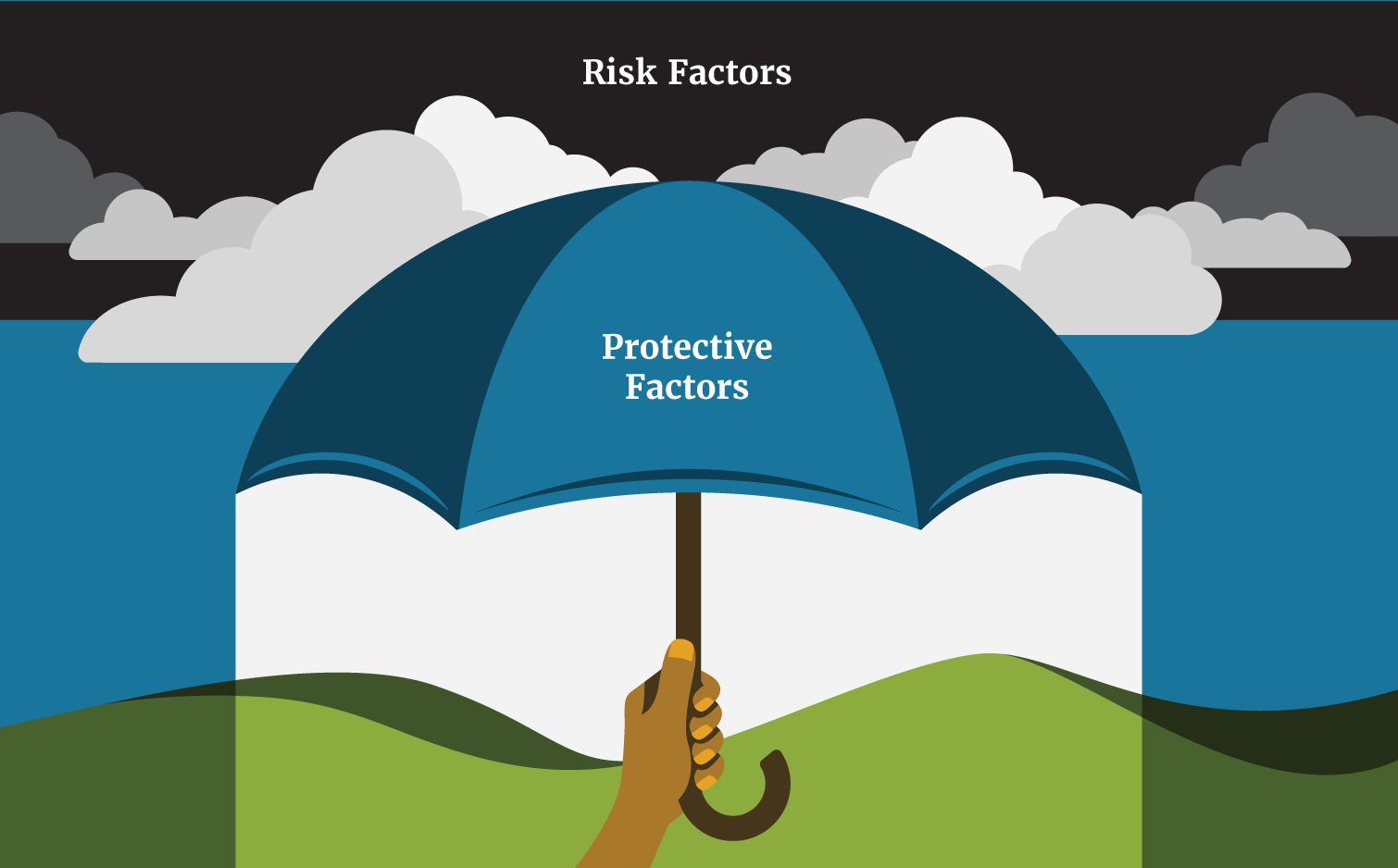Resilient Wisconsin: Risk and Protective Factors
What are risk and protective factors?
Risk and protective factors are like two sides of the same coin. Both can have a powerful influence on our mental, physical, and behavioral well-being. But neither have the final say when it comes to your health.
- A risk factor is something that increases a person’s risk of illness, injury, or harm. Experiences like abuse or violence in the home are risk factors. These can lead to harmful behaviors, substance use, and chronic disease.
- A protective factor lowers a person’s risk of negative health outcomes. For example, growing up in a safe and stable neighborhood often leads to better health.
Risk and protective factors exist in a wide variety of contexts. Your biology, relationships, communities, culture, and behaviors all have a chance to contribute to your health. They even influence each other. And while both lead to positive or negative effects, the risk or protective factors in a person’s life do not define them.
Know the difference
Take a look at common risk factors and important protective factors.
Common risk factors
Our behaviors: Substance use, unhealthy diet, physical inactivity, or risky sexual behaviors.
Our physical body and genetics: Age, gender, high blood pressure, obesity, or family medical history.
Our environment and culture: Poor working conditions, limited access to health care, isolation, or institutional racism that limits opportunities to certain races through unfair policies or laws.
Important protective factors
- Supportive relationships
- Healthy coping strategies
- A sense of purpose
- Positive parenting by caring adults
- Emotional self-awareness
- Safe environments and stable finances
- The willingness to seek help
- Problem-solving skills
Key features of risk and protective factors
Some factors can change and others stay the same.
Factors like age, race, or family health history can't be changed. Some factors, like where a person lives or how much money they earn, change over time. Other factors may be affected by awareness, trauma, environments, or experiences. These factors include things like a healthy diet or substance use.
Factors are often related and can affect each other.
Research shows that the more childhood trauma an individual has, the higher their risk for poor health. Why? Because risk and protective factors are connected. Simply put, people with some risk factors have a greater chance of experiencing more risk factors. They are also less likely to have protective factors. This connection is true for protective factors, too.
Addressing one factor can improve many health outcomes.
Nearly every risk or protective factor can be linked to a variety of health outcomes. For example, a child who grows up in a violent home is at increased risk of other health challenges, like anxiety or neglect. The good news? The opposite is also true. Addressing a single risk factor, like poverty, lowers the risk for many other unfavorable health outcomes. That’s one powerful way to help whole communities achieve better health.
Risk and protective factors affect many aspects of our health. That's good. It means community-wide programs can improve people’s lives more easily. How? By focusing on reducing risks and strengthening protective factors.
This community-wide approach is key in addressing risk and protective factors out of a person's control. These risk factors include community disruption, discrimination, economic stability, food insecurity, housing inequity, and racism.
Building connected, stronger, and thriving communities
Reducing the level of risk is often outside of our control. But we can actively work to build up protective factors that buffer the impacts of risk. It’s a lot like using an umbrella during a storm. You cannot control the rain, but you can protect yourself from getting wet by finding cover.
Let's look at a few examples of how we can buffer risk. Remember the importance of promoting community protective factors. Why? Because they give us the resources to build individual protective factors.
- If affordable housing is a risk within your community, urge your local leaders and representatives to improve access to Wisconsin’s affordable housing programs.
- If lack of access to high-quality, affordable child care is prominent with in your community, work with state programs like Raising Wisconsin or Project Growth that advocate for better child care.
- If health care inequities exist within your community, take advantage of one of the many state programs designed to raise health equity such as BadgerCare Plus or Family Care.


